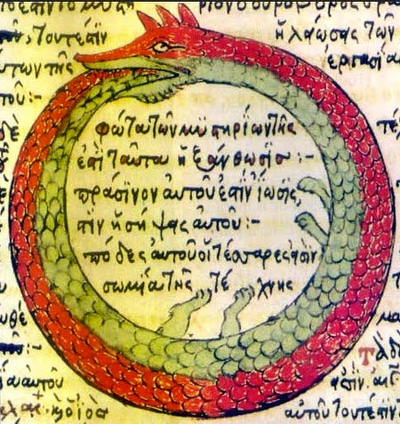Review:
The Wilding, by C.S. Friedman
| Series: |
In Conquest Born #2 |
| Publisher: |
DAW |
| Copyright: |
2004 |
| Printing: |
July 2005 |
| ISBN: |
0-7564-0202-6 |
| Format: |
Mass market |
| Pages: |
551 |
In Conquest Born is a rather odd space
opera, featuring an interstellar war between two great empires that
culminates in an intensely personal struggle between leaders of the two
sides. It has one of the most intensely misogynistic societies in science
fiction (the villains, yes, but weirdly ambiguous villains), genetic
breeding programs for telepaths, and a host of unlikable but oddly
fascinating characters. I thought it was weaker on re-read than I
remembered it being originally, but it's still singular enough in memory
that I wanted to read the sequel.
The Wilding picks up in the same universe a century and a half
later. I expected more of a direct connection to the plot of
In
Conquest Born, but I think this book could be read on its own. (This is
good, given how the plot of
In Conquest Born tends to slip out of
my memory, despite how unique the book is.) The Azeans and the Braxins
are, of course, still at war, an on-again, off-again affair that neither
side seems likely to ever win. But the Azeans have forbidden psychic
powers and driven all psychics underground, if they still exist at all.
They are supposedly too unstable to be allowed in the carefully
constructed Azean society.
Tathas is Braxin, but not from the ruling Braxan tribe. He is caught
practicing old rituals of his native tribe and escapes sentence of death
by going on the Wilding, an ancient practice of leaving Braxin culture to
find new genetic material and bring it back to strengthen their species.
Or, put in less euphemistic terms, to find and rape a woman and bring back
the resulting child, although apparently retrieving a genetic sample would
also work. Did I mention the misogynistic society part? Still there.
Zara, the other primary protagonist, is an Azean mediator who, as the book
is opening, starts developing psychic powers. This is a rather serious
problem that gets her suspended from her job. Her check of her own
genetic records (the old-school SF obsession with eugenics is also still
there) leads to the discovery that she's an identical twin, whose sister
was kidnapped as an infant under mysterious circumstances and apparently
by underground psychics. Zara decides to go in search of her.
As with
In Conquest Born, this book is full of deeply unpleasant
societies and world views. Also as with
In Conquest Born, I don't
think Friedman intends any of them to be held up as examples of correct
politics or behavior. What makes both of these books unusual is that
neither she nor the characters seem to be making any attempt to construct
a third alternative that would be better. The secret society of psychics
has a different appeal, but it's not clear the characters would want to be
part of it either, and it's quite possible that they're still responsible
for a lot of the crap that's going on in the galaxy. The book feels like
it ought to be political, as these societies are clearly broken and deeply
abusive (the Braxins more obviously than the Azeans, but they're both
creepy), but it mostly isn't.
Instead,
The Wilding is focused on individual people trying to make
their way in this world. Those people come from varying strata of these
societies. Zara and Tathas are there throughout; other characters crop up
briefly with their own viewpoints and then often go away again or are
killed. I think Friedman is going for a story of raw emotion and a tight
focus on individual actions, with little in the way of clean morality or
broader morals. And yet... the final act of the protagonists in the book
is a political act that seems aimed at making the universe a better place.
In a way, this is a very cynical book: there is a tremendous amount of
manipulation and political maneuvering, and it's hard to see any cause
here that one can fully support.
This is all rather similar to
In Conquest Born, but what held the
previous book together was its backbone of obsessive vengeance and the
spectacle of two intelligent people from utterly different societies
locked in all-out emotional and physical combat.
The Wilding
doesn't have that. It has characters with strong motives and strong
emotions, but none of them are the sort of epic, transcendent emotions
that propel mythic heroes at each other. This is a more prosaic and
personal book, which means the drama isn't strong and sweeping enough to
make the reader forget the deep unpleasantness that's going on around
them.
The Wilding feels less like a clash of titans and more like
personal quests for identity against a universe full of awful people and
worse systems. It also retains, in the Braxin, aggressive male-dominant
sexuality just this side of a Gor novel, but here that feels seedier and
even more squirm-inducing than it did in
In Conquest Born.
The Wilding is even more ambiguous about the ethics of that sexual
and misogynistic abusiveness; Tathas partly gives it up, but this is
presented more as an accommodation to another culture than as a real
engagement with the inherent abusiveness of Braxin society.
I still have no idea whether and to whom I would recommend
In
Conquest Born. I'm less torn about
The Wilding: don't bother.
It's a lesser work in all respects, it shares some of the problems with
too many characters and an occasionally incoherent plot, and I had even
more trouble with the horrible societies Friedman creates than I did in
the previous book. And it doesn't have the same counterbalance of epic,
uncontrolled emotions and characters who seem to transcend the story
they're in. Instead, it feels more like a story of damaged people in an
awful universe who are meddling through as best they can while being
manipulated by the people with real power. It got more depressing the
more I thought about it, and the ending doesn't salvage the story.
Rating: 4 out of 10
 The DRM/KMS framework provides the atomic API for color management through KMS
properties represented by
The DRM/KMS framework provides the atomic API for color management through KMS
properties represented by 






 What happened in the
What happened in the